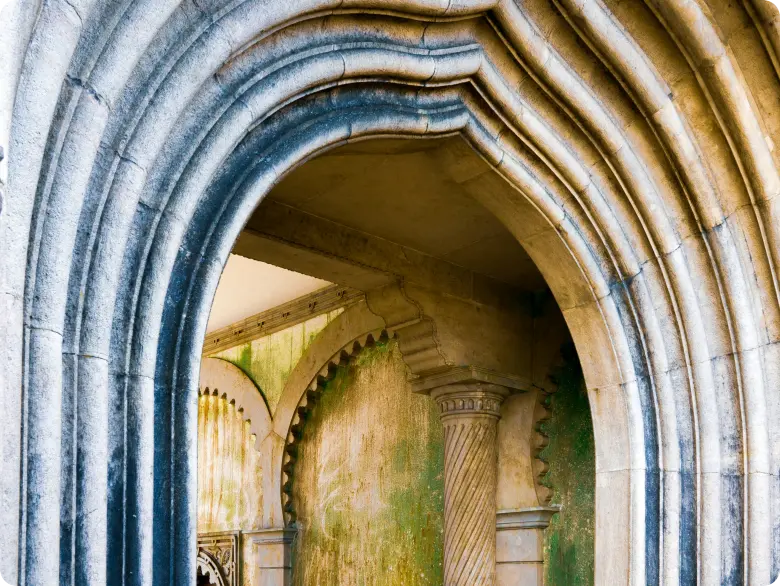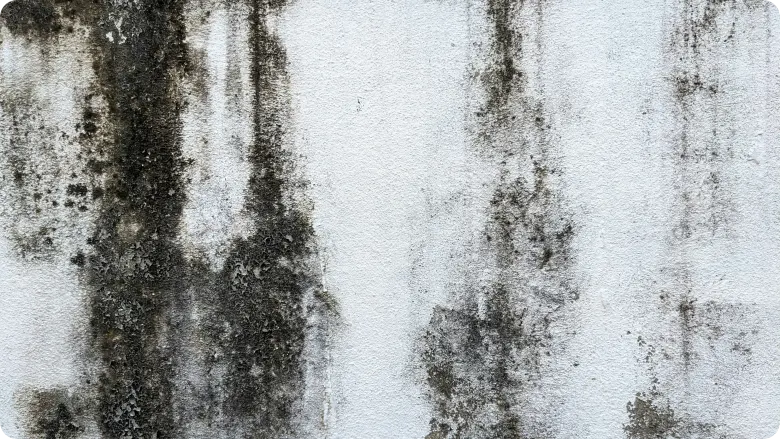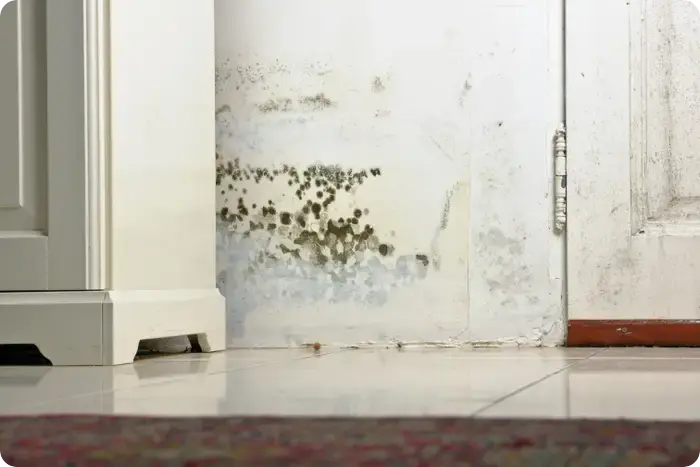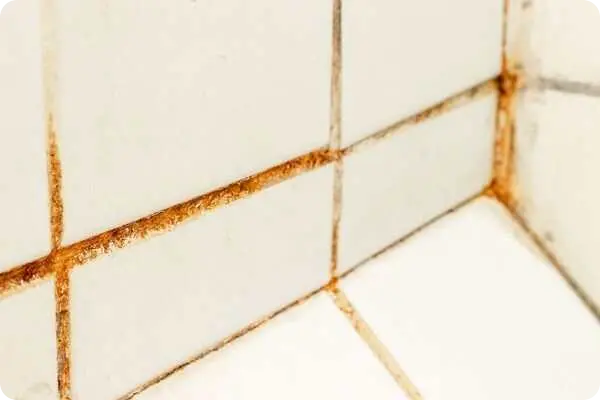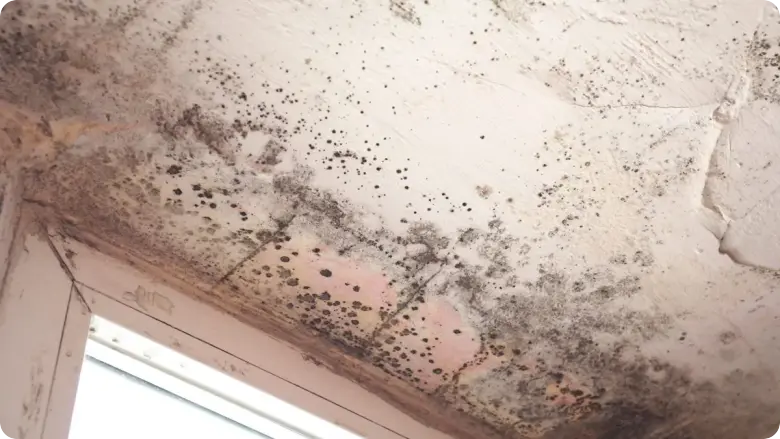¿Cómo limpiar y prevenir el moho en Portugal?
Es hora de abordar la situación del moho en su casa portuguesa. Presentaremos las estrategias a corto y largo plazo para limpiarlo y prevenir que vuelva a aparecer.
Limpieza de moho en Portugal
Si ha determinado que la mancha de moho es lo suficientemente pequeña para un enfoque de bricolaje, puede ponerse a trabajar. Pero antes de agarrar una esponja, recuerde esta regla de oro que se repite en todos los foros de expatriados: ¡La seguridad primero! El moho libera esporas cuando se altera, y no querrá estar respirándolas.
Su equipo de seguridad:
- Mascarilla: No se limite a atar una bufanda alrededor de su cara. Use una mascarilla FFP2 o N95 adecuada para filtrar las esporas en el aire.
- Guantes: Use guantes de goma o nitrilo para proteger sus manos tanto del moho como de la solución de limpieza.
- Protección ocular: Las gafas son lo mejor para evitar que las esporas o las salpicaduras de la solución de limpieza entren en sus ojos.
- Ventilación: Abra las ventanas de par en par antes de comenzar. Si la habitación tiene un extractor, enciéndalo.
Un consejo crucial de luchadores contra el moho experimentados: No solo lo pinte. Pintar sobre moho activo es como poner una venda en una pierna rota. Oculta el problema, pero el moho sigue creciendo por debajo, desgastando la superficie y liberando esporas. Debe matar y eliminar el moho por completo antes de pensar en pintar.
Soluciones para la limpieza de moho en Portugal
Entre en cualquier supermercado portugués (Continente, Pingo Doce) o ferretería (Leroy Merlin) y encontrará una variedad de productos. Aquí hay un desglose de las opciones más comunes y efectivas, muchas de las cuales se debaten y recomiendan a diario en grupos de expatriados en línea.
1. Lejía (‘Lixívia’): Campeón local
Esta es la solución tradicional para muchos hogares portugueses y es increíblemente efectiva en superficies no porosas.
-
Cómo usar: Diluya. Una proporción común es una parte de lejía por diez partes de agua. Colóquelo en un pulverizador.
-
Ventajas: Mata el moho superficial de manera muy efectiva y rápida en cosas como azulejos, lechada, vidrio y paredes pintadas y selladas adecuadamente.
-
Desventajas: Los vapores son fuertes. No es efectivo en superficies porosas como madera o paneles de yeso porque no puede penetrar para matar las "raíces" del moho. El agua en la solución de lejía puede, de hecho, alimentar al moho dentro del material.
2. Vinagre blanco (‘Vinagre Branco’): Favorito de los expatriados
Este es el héroe de innumerables discusiones en línea. Es menos tóxico, ecológico y sorprendentemente efectivo.
-
Cómo usar: Úselo puro. Coloque vinagre blanco puro en un pulverizador. No es necesario diluir.
-
Ventajas: Su naturaleza ácida le permite penetrar en superficies porosas y matar el moho en la raíz. Es más seguro de usar y el olor, aunque fuerte, se disipa una vez seco.
-
Desventajas: No es un desinfectante (no matará todas las bacterias como lo hará la lejía), y a algunas personas no les gusta el olor. Puede tardar más en hacer efecto.
3. Limpiadores comerciales de moho (‘Produto Anti-Bolor’):
Estos son productos especialmente formulados diseñados para matar el moho. A menudo contienen una mezcla de fungicidas y agentes de limpieza. Son muy efectivos, pero siempre lea la etiqueta para obtener instrucciones de seguridad. Algunos portugueses juran por una botella roja o azul, de una marca con un logo amarillo y negro.
¿Cómo limpiar el moho en Portugal?
1. Prepárese: Póngase su mascarilla, guantes y protección ocular.
2. Aplicar la solución: Rocíe su limpiador elegido (vinagre o lejía diluida) directamente sobre el área con moho. Sea generoso: asegúrese de que esté completamente saturado.
3. Espere: Este es un paso crítico. No solo rocíe y limpie. Deje que la solución actúe durante al menos una hora. Esto le da tiempo para trabajar y matar el moho.
4. Frote: Use un cepillo de cerdas duras o una esponja de fregar para frotar el área. Debería ver cómo el moho se desprende.
5. Enjuague y seque: Limpie el área con un paño húmedo. Luego, seque el área completamente. Use un trapo limpio y seco, una toalla o incluso un secador de pelo. Un ventilador apuntando hacia el área también ayudará a que se seque por completo.
6. Deseche: Selle las esponjas, trapos y su mascarilla usados en una bolsa de plástico antes de tirarlos para contener las esporas.
Prevención del moho en Portugal
Limpiar el moho es una reacción. Prevenirlo es la estrategia. Si no se lleva nada más de esta guía, que sea esto: debe cambiar activamente sus hábitos y el entorno de su hogar, especialmente de octubre a abril. Aquí está la sabiduría recopilada de miles de expatriados que han aprendido por las malas.
1. ¡Ventile, ventile, ventile!
Esta es la regla número uno, no negociable. El hábito portugués de airear la casa (‘arejar a casa’) es su nueva religión.
- Corriente cruzada diaria: Cada mañana, durante 10-15 minutos, abra ventanas en lados opuestos de su hogar para crear una fuerte corriente de aire cruzada. Sí, incluso cuando hace frío. No está tratando de enfriar la casa; está intercambiando el aire interior húmedo y viciado por aire exterior fresco y más seco.
- Ventilación dirigida: Después de una ducha o baño, abra la ventana del baño o encienda el extractor durante al menos 20-30 minutos. Al cocinar, siempre use el extractor sobre su estufa.
2. Controle la humedad con un deshumidificador (‘Desumidificador’)
Esta es la única mejor inversión que puede hacer para su hogar y su salud en Portugal. Es el electrodoméstico más recomendado en cualquier discusión sobre el moho.
- Cómo funciona: Extrae la humedad directamente del aire, recolectándola como agua en un tanque. Se sorprenderá de cuántos litros de agua recoge, especialmente en días lluviosos.
- Dónde colocarlo: Puede colocarlo en un lugar central como un pasillo o moverlo entre las habitaciones problemáticas. Muchas personas lo usan en el dormitorio durante el día y en la sala de estar por la noche.
- El bono: Un deshumidificador hace que el aire se sienta más cálido, ayuda a que la ropa se seque infinitamente más rápido y reduce esa sensación de humedad en sus muebles y ropa de cama.
3. Secar la ropa
Secar la ropa en interiores en un tendedero libera una cantidad asombrosa de humedad en el aire: un festín para el moho.
- Lo mejor es afuera: Siempre que sea posible, seque su ropa afuera.
- Truco del deshumidificador: Si debe secar en interiores, coloque el tendedero en una habitación pequeña y cerrada (una habitación de invitados o un baño grande) con el deshumidificador en funcionamiento. Su ropa se secará rápidamente, y la humedad terminará en el tanque, no en sus paredes.
4. Caliente su hogar estratégicamente
Recuerde, una casa fría es una casa húmeda. Mantener las superficies interiores calientes previene la condensación.
- Bajo y lento: En lugar de encender un calefactor durante una hora y luego apagarlo, es mucho más efectivo mantener una temperatura baja y constante (alrededor de 18-20°C). Esto evita que las paredes se enfríen. Los radiadores de aceite son excelentes para este tipo de calor constante.
- Dirija áreas problemáticas: Use un calefactor pequeño en el baño antes de ducharse para calentar los azulejos y las paredes.
5. Cree espacio para la circulación del aire
El moho ama el aire estancado.
- Retire los muebles de las paredes: Deje un espacio de 5-10 cm (unas pocas pulgadas) entre sus armarios, sofás y cabeceras y las paredes exteriores. Esto permite que el aire circule y evita que el moho crezca en ese espacio oculto y oscuro.
- No sobrecargue los armarios: Su ropa y zapatos necesitan respirar. Si los armarios son un problema, use pequeños absorbentes de humedad pasivos (absorvedores de humidade), que puede comprar en cualquier supermercado.
Al adoptar estos hábitos, está cambiando fundamentalmente el entorno dentro de su hogar. Ya no está proporcionando las condiciones húmedas y estancadas que el moho necesita para sobrevivir. Está tomando el control.








